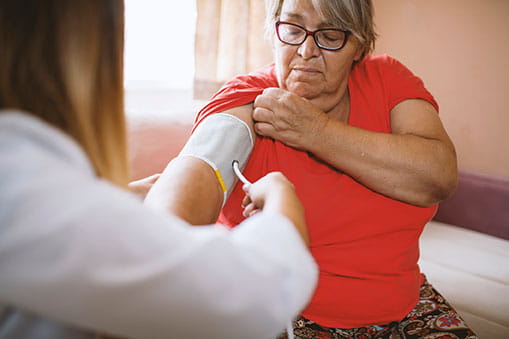Cuff size matters in blood pressure readings

As with clothes, the proper fit makes all the difference when monitoring your blood pressure. Using the wrong size blood pressure cuff can lead to incorrect blood pressure readings and misdiagnosis, according to new research.
The findings caution that people with obesity, who need large or extra-large blood pressure cuffs, were at particularly high risk for inaccurate readings if using the wrong cuff size.
"Accurate blood pressure measurement depends on proper patient preparation, positioning, measurement technique and individualized selection of cuff size, which should be based on the measured mid-arm circumference," study author Dr. Tammy M. Brady said in a news release. Brady is medical director of the Pediatric Hypertension Program at Johns Hopkins University in Baltimore.
Clinical practice guidelines highlight the importance of selecting the right size. But Brady said most of the research looking at how cuff size affects accuracy was done using a type of blood pressure monitor in which the cuff is manually inflated, and pressure is measured by listening to blood moving through the arteries using a stethoscope.
The new research, she said, looked at "today’s widely used automated blood pressure monitors."
Researchers analyzed blood pressure readings for 165 U.S. adults who were 55 years old, on average. They compared the average of three blood pressure readings using a regular, adult-sized cuff to the average of three readings taken using a cuff tailored to the person's size.
They found using a cuff that was too small mistakenly resulted in higher blood pressure readings in 39% of participants, while using a cuff that was too large missed 22% of those who did have hypertension.
More than 40% of participants were classified as obese. Those who required a large or extra-large cuff had significantly higher readings when using a regular-sized cuff. Systolic readings were 4.8 mmHg higher for those needing a large cuff and 19.7 mmHg higher for those needing an extra-large.
Nearly half of U.S. adults have high blood pressure, also known as hypertension, though many don't realize it. Blood pressure is considered high when the top number, called the systolic, is 130 mmHg or more, or when the bottom number, or diastolic, is 80 mmHg or more. Having uncontrolled high blood pressure increases the risk for heart and kidney disease, stroke, vision problems and other conditions. It was the primary or contributing cause of more than half a million deaths in the U.S. in 2019.
Another way to create lasting change for the next generation is to focus on the basics, Quyyumi said.
“If you were going to attack one long-term solution to target food insecurity, it’s to improve education,” he said. “If you can get every child educated to a high standard, then you don’t have to worry. These kids will grow up educated, get good jobs and be able to afford nutritious food. If you want to socially change the trajectory, education is where the action needs to be.”





